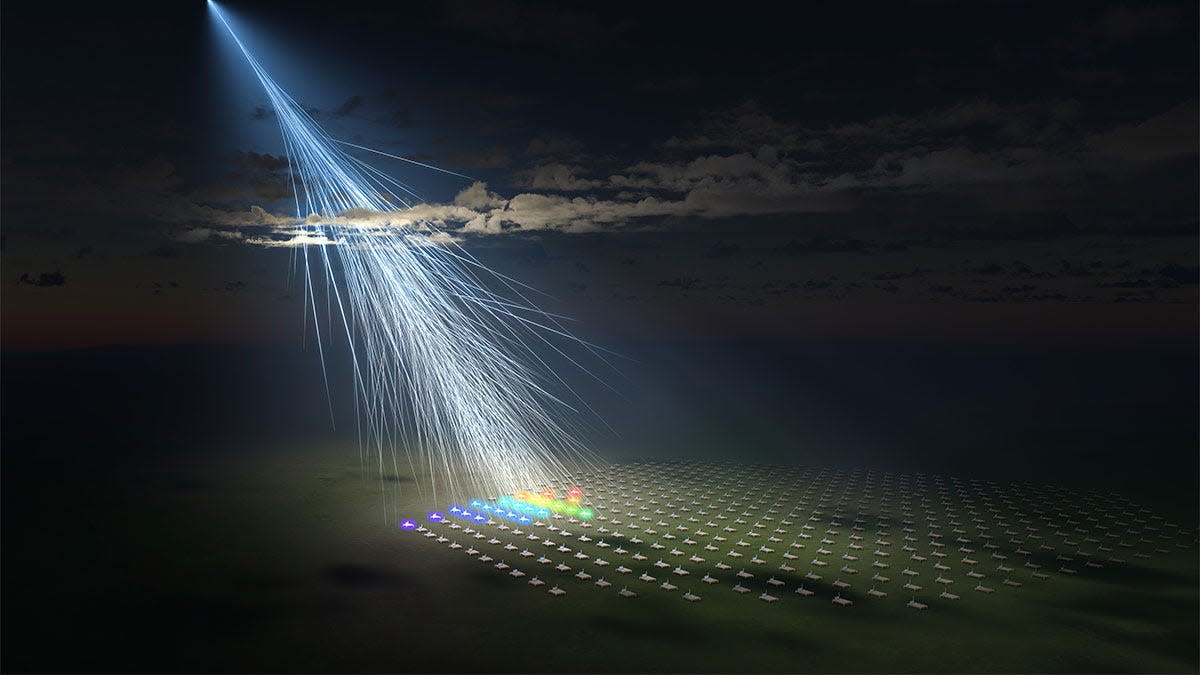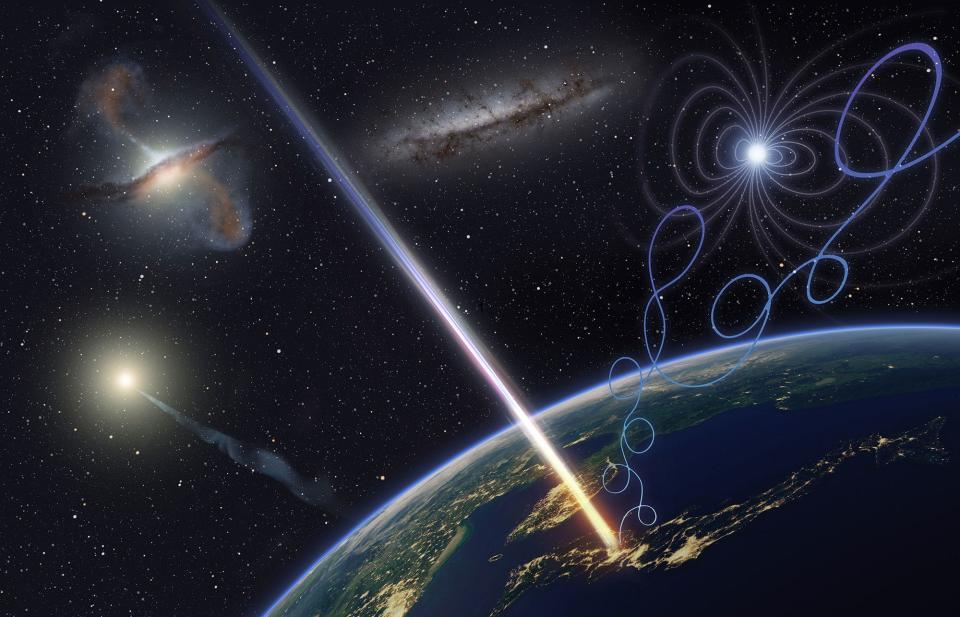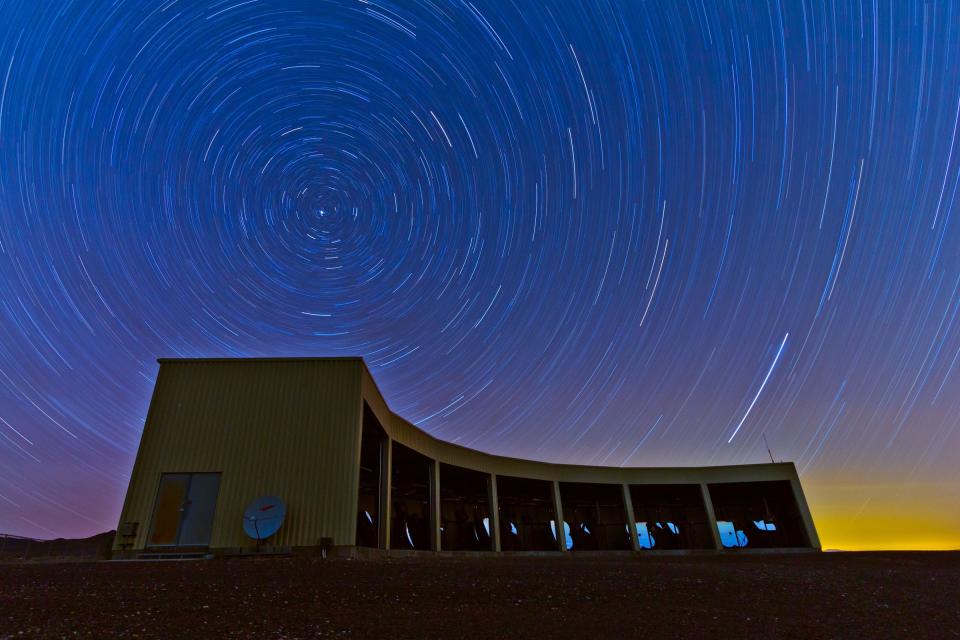Most powerful cosmic ray in decades has scientists asking, 'What the heck is going on?'

Scientists are seeking answers to a new outer space mystery after a telescope in Utah detected the most powerful cosmic ray seen in more than three decades, according to the authors of new research published Thursday in the journal Science.
A puzzling, extremely rare, ultra-high-energy particle is believed to have traveled to Earth from beyond the Milky Way galaxy, although the exact origin of this turbocharged particle from outer space remains a mystery. Some experts have suggested that the cosmic ray, nicknamed the Amaterasu particle after the sun goddess in Japanese mythology, could have been generated by unknown physics.
According to an article published in Nature, a British scientific journal, the “amazing” discovery has left some scientists wondering “what could produce such a high energy,” said Clancy James, an astronomer at Curtin University in Perth, Australia. Cosmic rays, invisible to the naked eye, are charged particles — often a proton — that travels through space from other galaxies and extragalactic sources at close to the speed of light.
Cosmic rays with energies of more than 100 exa-electron volts (EeV) are rarely detected. According to NASA, cosmic rays constantly enter Earth’s atmosphere and “provide one of our few direct samples of matter from outside the solar system.”

Cosmic ray found decades ago had 'more energy than was theoretically possible'
The most powerful cosmic ray, named the Oh-My-God particle, was detected more than 30 years ago and measured around 320 exa-electron volts (EeV) when it was discovered. One EeV is around one million times greater than those reached by the most powerful human-made particle accelerators, according to Nature.
“Nothing in our galaxy had the power to produce it, and the particle had more energy than was theoretically possible for cosmic rays traveling to Earth from other galaxies,” a statement from the University of Utah said. “Simply put, the ( Oh-My-God) particle should not exist.”
The recently discovered cosmic ray — which was first detected on May 27, 2021 at the Telescope Array in Millard County, Utah – had an estimated energy of 240 EeV. Toshihiro Fujii, an astronomer at the Osaka Metropolitan University in Japan, found the “surprising” signals — which had measurements that were consistent with those produced by ultra-cosmic rays — while conducting a routine data check at the telescope.

An initially skeptical Fujii wondered if there had been a mistake, like some sort of bug in the software, or if the facilities’ detectors had been damaged with something super energetic. Ultrahigh-energy cosmic rays usually have a relatively smooth journey through space (meaning they shouldn’t be affected by galactic and extra-galactic magnetic fields), which makes it easier for scientists to pinpoint the stellar explosion, black hole or galaxy that the energetic spike came from.
Where do high-energy cosmic rays originate from?
The exact origins of these high-energy particles remain unclear, even after years of research. When scientists have attempted to trace the Oh-My-God particle and this new particle, its trajectory to its source has led to nothing with high enough energy to have produced it, said John Matthews, Telescope Array co-spokesperson at the University of Utah and co-author of the study.
“That’s the mystery of this—what the heck is going on?” Matthews said.
According to John Belz, professor at the University of Utah and co-author of the study, “these events seem like they’re coming from completely different places in the sky.” The biggest discovered so far appear to originate from voids or empty space.
“It’s not like there’s one mysterious source,” Belz said. “It could be defects in the structure of spacetime, colliding cosmic strings. I mean, I’m just spit-balling crazy ideas that people are coming up with because there’s not a conventional explanation.”

Fujii and his team are in the process of upgrading the Telescope Array to be four times as sensitive as before, which will allow researchers to capture more of these rare ultrahigh-energy cosmic rays and trace their origins more precisely.
This article originally appeared on USA TODAY: Cosmic ray more powerful than Oh My God found by scientists in Utah

